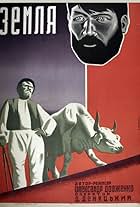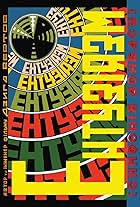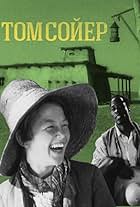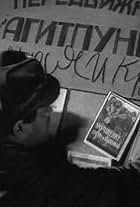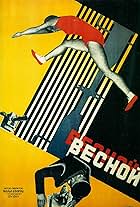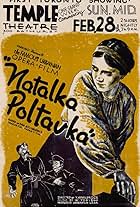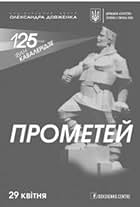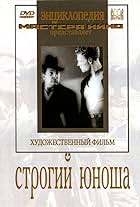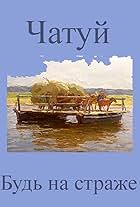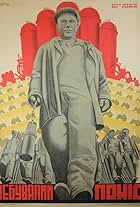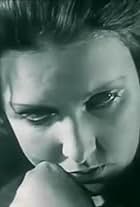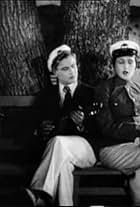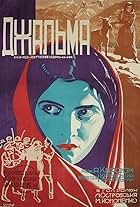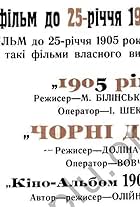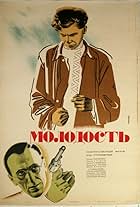Advanced search
- TITLES
- NAMES
- COLLABORATIONS
Search filters
Enter full date
to
or just enter yyyy, or yyyy-mm below
to
to
to
Exclude
Only includes titles with the selected topics
to
In minutes
to
1-30 of 30
- In the peaceful countryside, Vassily opposes the rich kulaks over the coming of collective farming.
- How the miners of the Don coal basin (one of the industrial regions of Ukraine) were striving to fulfill in four years their part of the Five Year Plan.
- This documentary film is showing the hard labor of countrymen in industrial production to strengthen the U.S.S.R. economy and turning their country into a world power.
- A young farmer and his lazy father try to help with the construction of the Dniprohes, but he learns that strength is not enough for a worker and joins the Communist party.
- About a merry, smart boy - Tom Soyer, that, testing, as him it seemed to, all facilities, to be good, decided nevertheless to go away from home and become a marine robber.
- A demobilized Red Army soldier returns to his village. Inspired by the spirit of collectivism, he plows a field so that the kulak's portion now belongs to the community, and sows it with grain confiscated from the 'philistines'. His father, a man of traditional world outlook, lives in a pantheistic world of the Ukrainian ethos, where sin has a physical dimension. He does not believe that the stolen grain will sprout on the stolen land. When the grain finally sprouts, the old man admits that his son was right; for the sake of building a new world, the old laws of the universe should be broken.
- An opportunistic Kyivan Apollon Shmyguyev, whose peaceful bourgeois life is interrupted by the civil war, decides to wait out the trouble in the South of Ukraine, which is under the rule of the Russian White Army. After gathering left off goods on Andriyivskyi descent in Kyiv, he goes on a journey with a camel, which somehow had strayed to his house. In the midway he is stopped by the Red Army: the camel gets confiscated for the needs of revolution, and Apollon appears in the disposal of the Bolshevik commissar. Zealous and cunning, Apollon quickly takes lead of the local commissariat. But the ingrained thirst for a profit once again puts his life in danger.
- In Spring is a masterpiece of Ukrainian cinema avant-garde, a non-fiction film made by Mikhail Kaufman, Dziga Vertov's brother and co-author, along the lines of the avant-gardist theory of «cine-eye». The film shows Kyiv in 1929, almost unknown today. Pictures of wakening city, its resurging life resonate with lyrical views of reviving nature. Kaufman's attentive camera dwells deliberately on smiling faces of children, lyrically depicting a declaration of love to Kyiv. In In Spring, Kaufman used the method of «hidden camera» for the first time.
- Ukrainian girl Natalka, daughter of poor widow Terpeliha, pants for favorite Peter that searches for itself and Natalka happy fate on strange land. Once the Elective comes in the house of Terpeliha, to husband a girl for a local pan Voznyi. The aged barin is opposite Natalka, and Petro, as though feeling that is late, hurries in native edges.
- Caucasian war goes, squires began to release the serfs, a merchant layer ripens. The rich are rich, the poor are poor. But here already Marks writes the works and the first agitators-revolutionaries appeared at the front. Prometheus cheered up and prepares to tear hateful bonds.
- The characters debate the role of free love and free will within the Soviet social and political economy.
- Ukraine in the early 1930s. A former kulak infiltrates one of the collective farms under the guise as a fire victim called Podorozhny. As a merry accordion player and handyman, he quickly becomes one of the collective farm. Soon he commits a number of crimes that impede the normal work of the collective farm, and then with the help of local kulaks he organizes the theft of collective farm horses. However, at a crossing, the ferryman detains the criminals. Meanwhile, a delegation from a sponsored factory arrives at the collective farm. One of the delegation's members recognizes Podorozhny as the kulak who killed the village council chairman and fled from prison.
- Made during the rapid industrialization and collectivization of Stalin's Five-Year Plan. Kaufman countered the poverty of the villages with the geometrical rhythm of mechanized factories; militarization is shown as the next step of the 'unprecedented campaign'. "The proletariat, having become master of one sixth of the globe, frees the rural working people from the kulak oppression...THE PROLETARIAT...engages the peasantry in a joint campaign for Socialism. This is what the film speaks about".
- On the struggle of the communist sailors with the White Guards and the German occupiers in the Crimea during the civil war. Based on the play The Death of the Squadron (Gibel eskadry, 1933) by Aleksandr Korneychuk (Ukrainian: Oleksandr Evdkimovich Korniychuk) (1905-1972).
- Civil war in the Caucasus. Ukrainian Nikolai Barabash is wounded in battle. He is saved, cured and loved by a Chechen girl called Dzalma. After the war, Nikolai and Dzhalma return to his native Ukrainian village. Part of the villagers, the elders, hostilely greet the young Muslim woman, this "non-Christian soul".
- To help his friend Lenya, Yura steals a Stradivarius violin belonging to the professor from his grandfather, a violin maker. Having learned about everything, the professor begins to study with the talented Lenya.
- About the peasant uprising in the Poltava region in 1905.
- About the uprising of Ukrainian peasants under the leadership of the national hero Karmelyuk against landowners and Polish gentry, in the beginning of the 1830s.
- The film recreates the events of 1905. In the center of the picture is the struggle of the proletariat, led by the Bolshevik party, against tsarism. The demonstration of labor unrest is replaced by episodes of the Russo-Japanese war, Black-Hundred demonstrations, accompanied by a pogrom of Jews, and beating of the intelligentsia. The film paints the attitude of the Mensheviks towards armed insurrection, reproduces the picture of barricade battles, the arrest of the Council of Workers' Deputies and the brutal reprisals of the tsarist autocracy with revolutionaries.
